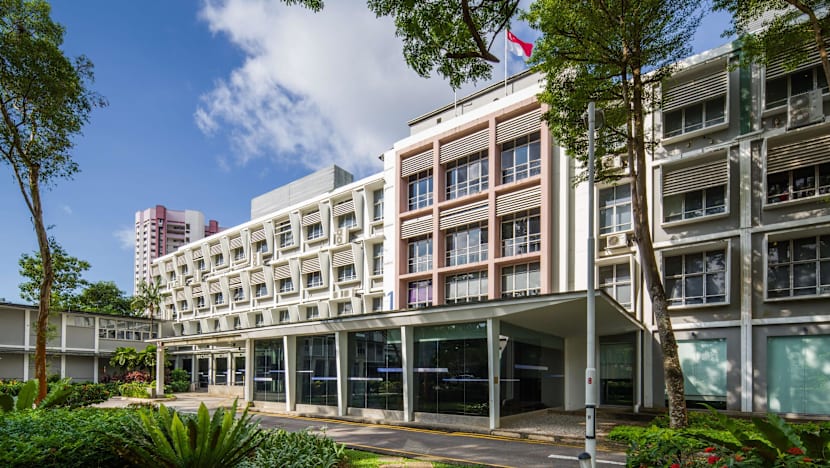Lifestyle
Former Kandang Kerbau Hospital Becomes Singapore’s 76th National Monument

The former Kandang Kerbau Hospital (KKH) has been designated as Singapore’s 76th national monument, an announcement made by the National Heritage Board (NHB) on October 1, 2023. This recognition highlights the site’s significant socio-cultural value and its historical importance, covering three blocks of the former hospital located at 1 Hampshire Road. The announcement coincides with the 101st anniversary of KKH’s establishment as a dedicated maternity hospital.
A Historic Legacy in Healthcare
When it opened, KKH was the only government hospital in Singapore focused on obstetrics and gynaecology. According to the NHB, it played a critical role in Singapore’s medical history, witnessing the births of over 1.2 million babies and numerous medical advancements. Acting Minister for Culture, Community and Youth, David Neo, officiated at the gazetting ceremony, emphasizing the importance of preserving such sites for future generations.
The name “Kandang Kerbau” translates from Malay to “buffalo enclosure,” referencing the area’s past as a location for buffalo pens during the colonial era. The site has evolved significantly since 1858, when it began as a general hospital. It was later known as the Pauper Hospital for Women and Children before becoming Kandang Kerbau Hospital in 1924 and evolving into a free maternity hospital.
During World War II, KKH operated as an emergency general hospital and was known as Chuo Byoin, meaning “central hospital” in Japanese. Notably, Dr. Benjamin Henry Sheares, who later served as Singapore’s second president, was the deputy medical superintendent during this period. He introduced the lower-segment Caesarean section to reduce maternal mortality rates, significantly improving childbirth safety.
Milestones and Achievements
Post-war, KKH resumed its role as a specialized hospital, introducing advanced technologies and care practices that garnered international attention. In 1966, dubbed the “year of the birth-quake,” the hospital recorded a staggering 39,835 deliveries, earning a place in the Guinness Book of Records for the highest number of births at a single maternity facility in a year. At its peak, KKH delivered a baby approximately every 13 minutes and welcomed over 110 infants per day.
In addition to its impressive delivery record, KKH was pivotal in the development of nursing and midwifery. The School of Midwifery, established in 1952, contributed to the professionalization of these fields. The hospital also made headlines for significant medical milestones, including the delivery of Singapore’s first pair of conjoined twins in 1961 and Asia’s first in-vitro fertilisation baby in 1983.
In 1997, KKH relocated to 100 Bukit Timah Road and was renamed KK Women’s and Children’s Hospital. Since then, the former site has housed the headquarters of the Land Transport Authority. The buildings themselves are noteworthy for their architectural design, featuring modern materials intended to enhance patient comfort amidst Singapore’s tropical climate.
Blocks 2 and 3, built in 1933 and 1940, are among the oldest structures on the site, while Block 1 was designed by Dr. Sheares and completed in 1955. The design includes “concrete fins” that reduce solar heat gain and glare, promoting a comfortable environment for recovery.
Professor Alex Sia, CEO of KK Women’s and Children’s Hospital, remarked that the gazetting of the former KKH as a national monument is a profound honour that celebrates the compassion of its pioneers and the trust families have placed in the hospital over the years.
According to the NHB, national monuments play a crucial role in preserving Singapore’s built heritage and are protected under the Preservation of Monuments Act. The former KKH site becomes the first national monument gazetted in over three years, following the designation of the Padang as the 75th national monument in August 2022.
Melissa Tan, Director of Heritage Policy and Research at NHB, emphasized that national monuments tell the stories of those who built Singapore. The former KKH connects generations of Singaporeans and many families have cherished memories tied to the site. The gazetting serves to preserve its legacy for future generations.
Visitors can explore the history of the former KKH through a special exhibition titled The Architecture of Care, which will be available from October 1 until December 31, 2023.
-

 Business5 months ago
Business5 months agoKenvue Dismisses CEO Thibaut Mongon as Strategic Review Advances
-

 Lifestyle4 months ago
Lifestyle4 months agoHumanism Camp Engages 250 Youths in Summer Fest 2025
-

 Sports4 months ago
Sports4 months agoDe Minaur Triumphs at Washington Open After Thrilling Comeback
-

 Sports5 months ago
Sports5 months agoTupou and Daugunu Join First Nations Squad for Lions Clash
-

 Top Stories5 months ago
Top Stories5 months agoColombian Senator Miguel Uribe Shows Signs of Recovery After Attack
-

 World5 months ago
World5 months agoASEAN Gears Up for Historic Joint Meeting of Foreign and Economic Ministers
-

 Health4 months ago
Health4 months agoNew Study Challenges Assumptions About Aging and Inflammation
-

 Business5 months ago
Business5 months agoOil Prices Surge Following New EU Sanctions on Russia
-

 Entertainment4 months ago
Entertainment4 months agoDetaşe-Sabah Violin Ensemble Captivates at Gabala Music Festival
-

 Entertainment4 months ago
Entertainment4 months agoBaku Metro Extends Hours for Justin Timberlake Concert
-

 Top Stories5 months ago
Top Stories5 months agoRethinking Singapore’s F&B Regulations Amid Business Closures
-

 Business5 months ago
Business5 months agoU.S. House Approves Stablecoin Bill, Sends to Trump for Signature









